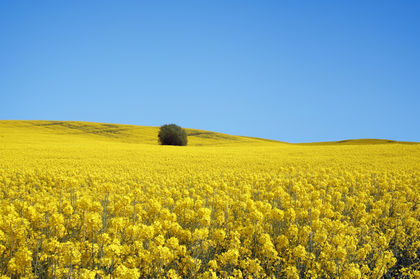Sweden - Agriculture

Only about 2% of Sweden's labor force earned their living in agriculture in 1999, compared with more than 50% at the beginning of the 20th century and about 20% in 1950. Production exceeds domestic consumption; however, a considerable amount of food is imported. About 6.8% of the land area of Sweden, or 2,790,000 hectares (6,894,100 acres), is classed as land cultivated with permanent or temporary crops. In 2000 there were 76,798 holdings with more than two hectares (five acres) of arable land. Farm holdings are intensively tilled; fertilizers are used heavily and mechanization is increasing. During 1980–90, the agricultural sector grew by an annual average of 1.5%. However, during 1990–2000, it remained essentially unchanged.
Most farmers are elderly, and few small farms have a successor waiting to replace the present farmer. Government policy in recent years has been to merge small unprofitable farms into larger units of 10–20 hectares (25–50 acres) of arable land with some woodland, the size estimated able to support a family in the same living standard as an industrial worker. Most Swedish farmers are small landowners who also support themselves through forestry and fishing, and in 2000, 54% of farms were less than 20 hectares (50 acres) in extent. Farmer participation in the government's set-aside program resulted in about 300,000 hectares (741,300 acres) of cropland being retired from production in 1990, and again in 1991.
Grains (particularly oats, wheat, barley, and rye), potatoes and other root crops, vegetables, and fruits are the chief agricultural products. Sugar beet cultivation in Skåne is important and produces almost enough sugar to make Sweden self-sufficient. In 2000, Sweden produced 1,642,100 tons of barley; 1,151,100 tons of oats; 2,334,800 tons of wheat; 9,250,000 tons of potatoes; and 180,000 tons of rye.
In the last 50 years, Swedish agricultural policy for major commodities has developed under an official system of import levies, export support, and market intervention. This policy was in response to the economic depression of the 1930s, and for the country's need for food security in times of risk or war. The Warfare Preparedness Program, developed after World War II (1939–45), protected Swedish agriculture, resulting in high costs and overproduction. In 1991, a five-year agricultural reform program came into effect, whereby most subsidies and price regulations were eliminated, allowing consumer demand to determine production volumes. By 1995, Sweden's agricultural policy was fully in line with EU rules. Sweden has also enacted a plan to convert 10% of the country's arable land to ecological, or organic, agriculture. To this end, the country increased taxes on energy, fertilizers, and biocides in 1995 by Kr—700 million. The government has also introduced incentives to promote the production of biomass for energy production.
agriculture in swed.
What are the crops calibrated in Sweden? And when?